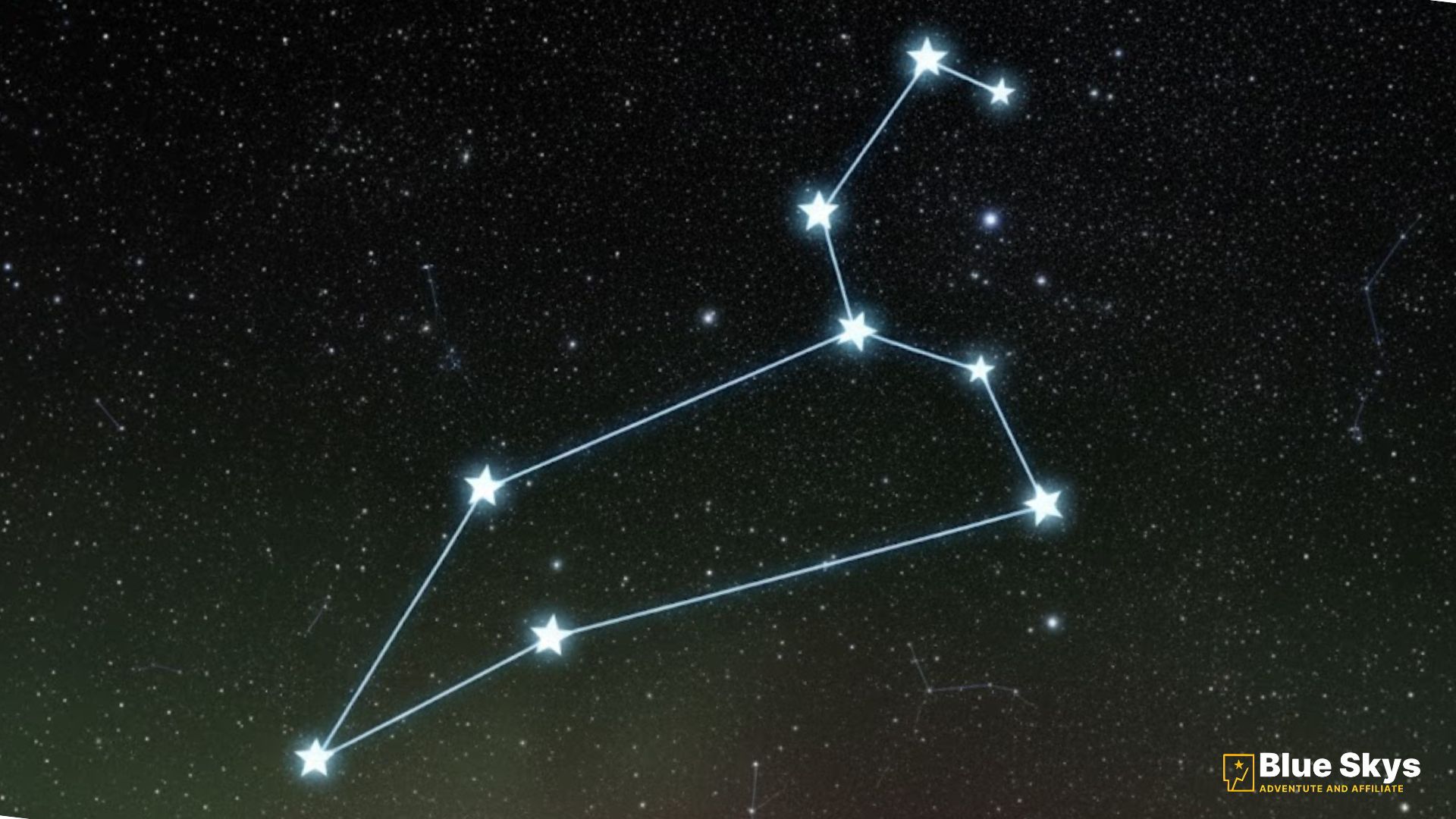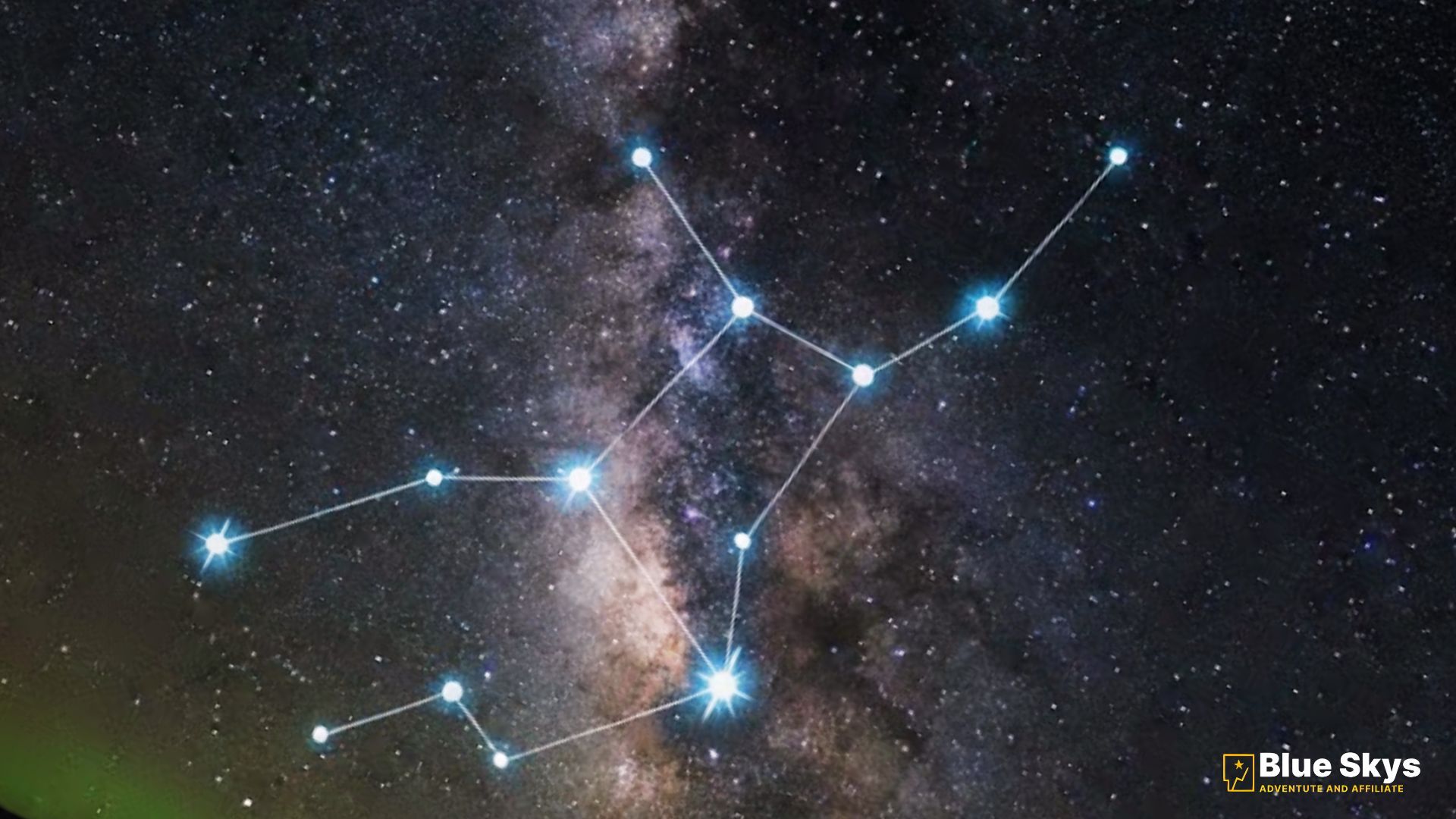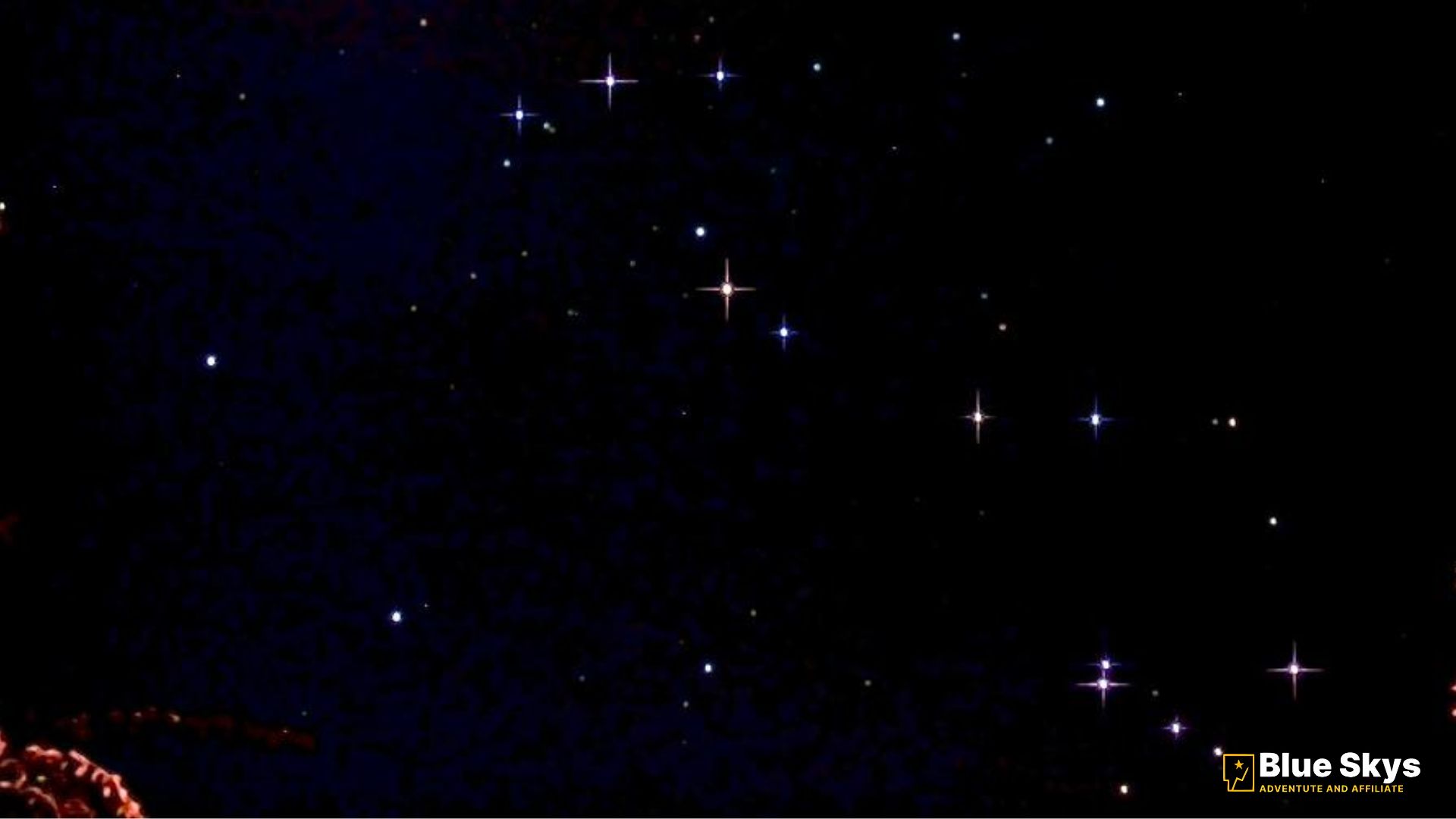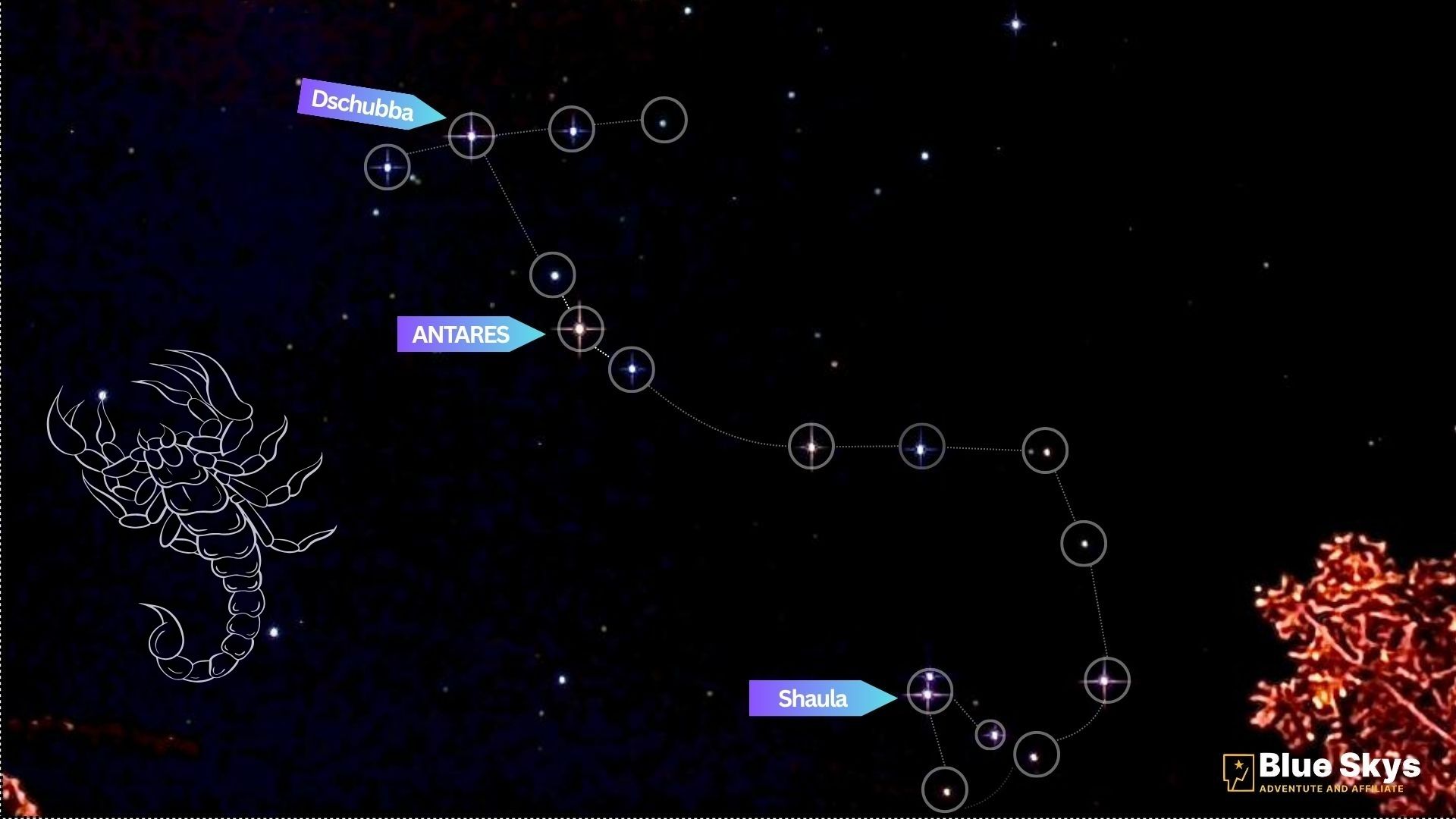Hunting the Celestial Twins
When the cold bite of winter settles in, look up. Two exceptionally bright stars dominate the winter night sky: Castor and Pollux shine side by side. They form the famous Gemini Constellation. Sky-watchers have known them for millennia as the Twins. Gemini is one of the twelve constellations of the Zodiac, and it’s a mesmerizing sight from December through April. It’s a constellation that anchors mythology, symbolizing unity and eternal brotherhood.
Gemini tracks the ecliptic plane. This is the cosmic highway where the Sun, Moon, and all the planets travel in our solar system. This beautiful blend of history and science makes it an incredibly rewarding target for your next night out.
Locating the Twins: Your Beginner’s Guide to Finding Gemini
If you’re an amateur asking how to find the Gemini constellation at night, the good news is it’s surprisingly straightforward. You just need to know how to “star-hop.” Start by finding the three bright stars in Orion’s Belt. Draw an imaginary line from them, moving upward and slightly to the left, past the head of Taurus. The first two bright stars you hit mark the heads of the Twins. The constellation looks like two parallel stick figures stretching southward. This makes it easy to identify, even from a moderately light-polluted spot.
Gemini reaches its peak visibility—its highest point in the sky—around 10 PM in February. Northern Hemisphere observers see it best then.
- Best Time to View: The prime season is December through April in the Northern Hemisphere.
- Regional Visibility: If you are in the Southern Hemisphere (like Australia and New Zealand), the constellation appears low on the northern horizon during summer nights. Keep a Gemini constellation map printable handy to confirm your findings against the sky.
Castor and Pollux: Distinct Stars Behind the Twin Name
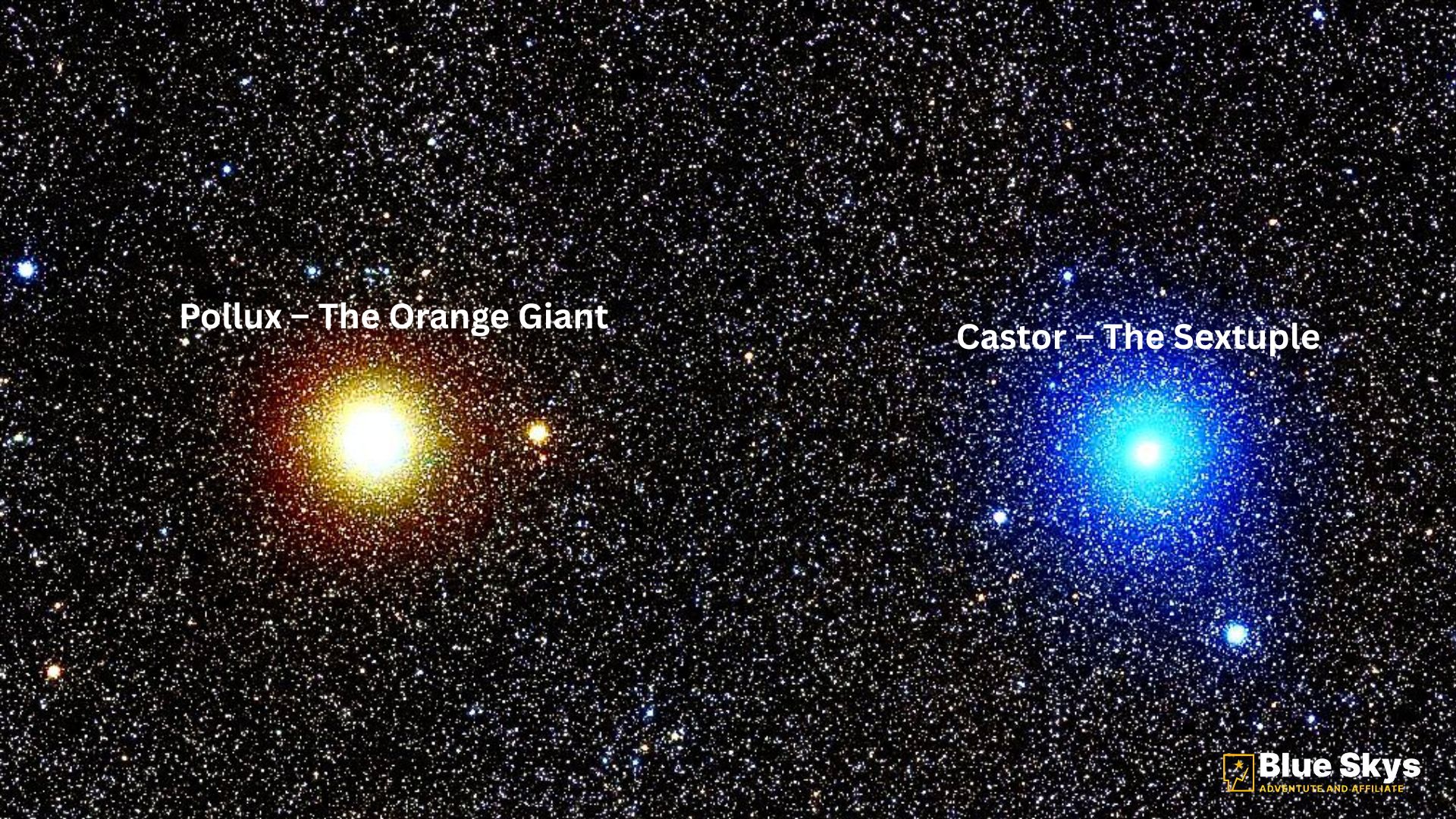
The stars Castor and Pollux may look like two peas in a cosmic pod. However, they differ dramatically when you examine their science. This is a common point of interest when looking to identify Castor and Pollux in the night sky.
- Pollux – The Orange Giant with a Companion: Pollux is an old, large, and evolved orange giant star, measuring nearly ten times the diameter of our Sun. Its warm, golden glow makes it easy to distinguish from its cooler brother. Adding to its complexity, astronomers confirmed an exoplanet orbiting Pollux in 2006. This planet, Thestias (Pollux b), establishes Pollux as a significant beacon in exoplanet research.
- Castor – The Sextuple Star System: It is a true sextuple star system—six stars gravitationally bound together. This intricate orbital dance makes Castor one of the most studied multiple star systems. It offers astronomers unique insights into stellar mechanics.
Deep Sky Treasures: M35 and the Clown Face Nebula
Beyond its brilliant points of light, the Gemini constellation hosts deep-sky gems, perfect for amateur astronomers exploring Gemini star cluster M35 visibility:
- M35 (NGC 2168): This sparkling, bright open cluster holds hundreds of stars. Observers easily see it as a fuzzy patch of light, even through standard binoculars. It’s a rewarding target for observers.
- NGC 2392 (Clown Face Nebula): This incredible planetary nebula requires a small telescope. It was famously known by the less favored historical name Eskimo Nebula. When you view it, its vibrant, shell-like structure truly gives it the appearance of a face surrounded by a parka hood.
The Geminid Meteor Shower: A Rock-Solid December Show
Perhaps the most thrilling event tied to this constellation is the Geminid Meteor Shower. We widely consider this display one of the best and most reliable annual showers. It often lights up the night with bright, persistent meteors, peaking every year in early-to-mid December.
What makes the Geminids unique? Unlike most meteor showers that originate from comets, these meteors are debris from an asteroid—3200 Phaethon. Planning your viewing involves knowing where is the Geminids radiant in Gemini. This is the point the meteors appear to stream from, located near Castor.
Myth and Legacy: The Dioscuri and St. Elmo’s Fire
Users are often drawn to the compelling story of the Twins, which beautifully bridges lore and science.
In Greek mythology, the twins are revered as the Dioscuri. When the mortal Castor was killed, his heartbroken, immortal brother, Pollux, begged Zeus to let them remain together. Zeus obliged, placing them in the stars as a symbol of eternal, unbreakable brotherhood. The Twins were famously the protectors of sailors. They often appeared during storms as St. Elmo’s Fire, an electrical phenomenon. This ghostly, luminous discharge on ship masts signaled the Twins’ protective presence. This powerful story is central to the Gemini constellation origin.
Astrophotography and Beginner Observation Angles
If you’re interested in photographing the Gemini constellation with a DSLR/smartphone, the bright stars and open clusters are ideal starting points:
- Star Trails: Aim your camera at the Twins for long exposures to capture mesmerizing light arcs.
- M35: This rich cluster can be captured well with a small telescope or a high-powered telephoto lens mounted on a tracking tripod.
- Geminids: For the meteor shower, use a wide-angle lens, set your camera’s ISO to 800-1600, and use 20-30 second exposures to capture the vivid meteor streaks.
Top 4 Tips for Observing Gemini

- Use an App: Utilize mobile tools like Stellarium or Sky Guide, which are the best astronomy apps for finding Gemini, to quickly orient yourself.
- Locate by Orion: Practice star-hopping from Orion’s Belt to quickly find the naked-eye stars in Gemini constellation.
- Check Local Times: If you’re in the UK or Australia, verify the Gemini constellation visibility tonight using a regional calculator to ensure you observe when the constellation is highest in the sky.
- Binoculars are Best: While the main stars are bright, grab your binoculars to fully appreciate the detail and richness of the Gemini star cluster M35 visibility.
Conclusion: The Starry Symbol of Duality
The Gemini Constellation offers a rewarding experience for any night-sky explorer. Whether you’re a beginner learning how to find Gemini constellation or an intermediate observer trying to resolve the sextuple star system of Castor, the Twins provide a beautiful convergence of deep scientific fact and timeless mythological narrative. By focusing on observation, annual events like the Geminids, and the rich astronomical detail, you unlock the full story the celestial coordinates of Gemini hold.
